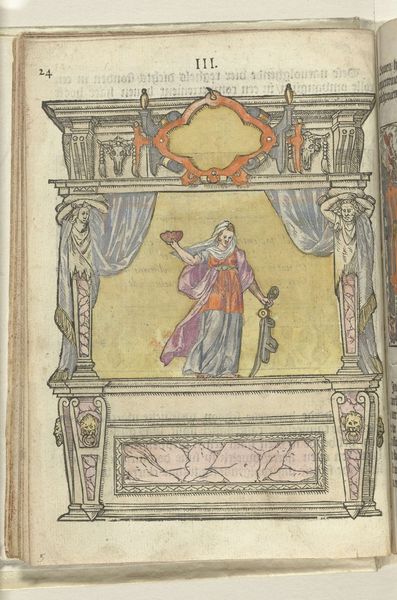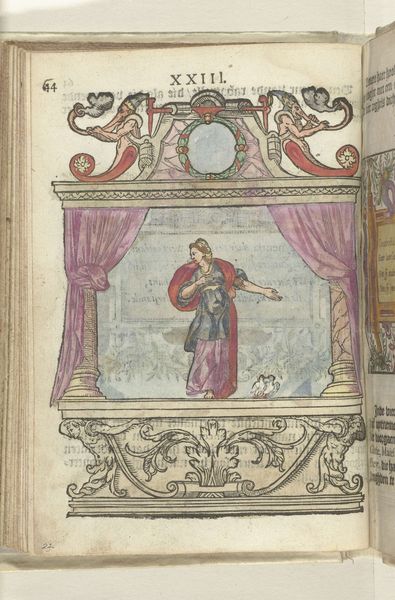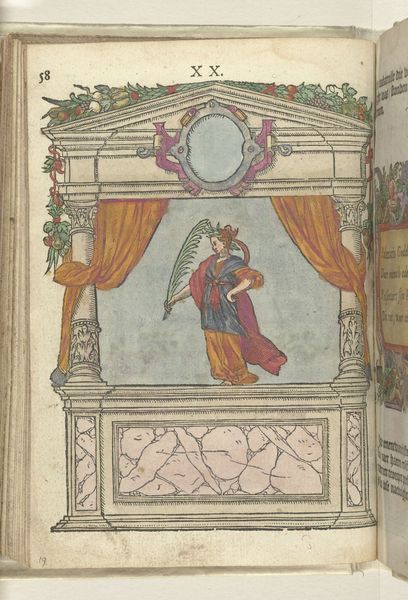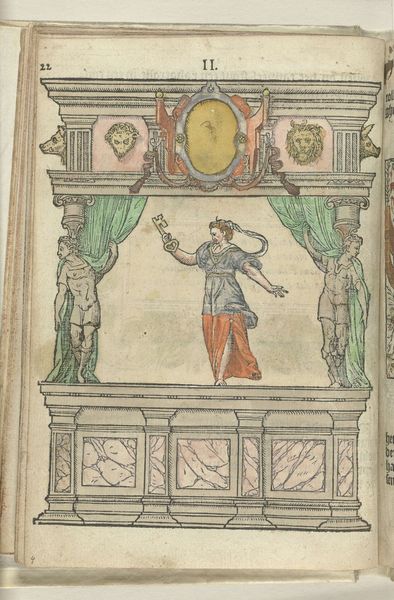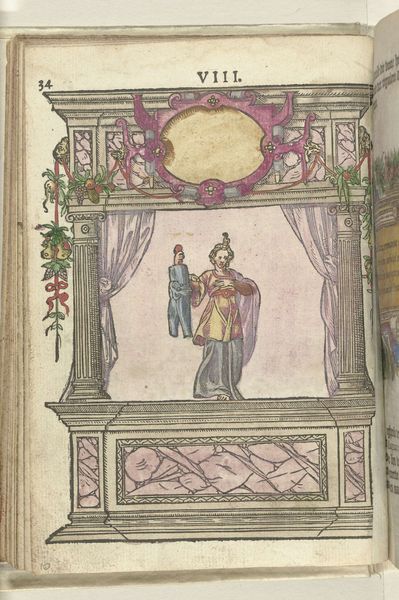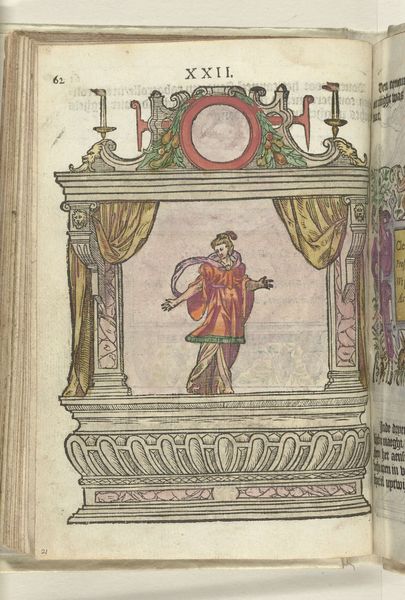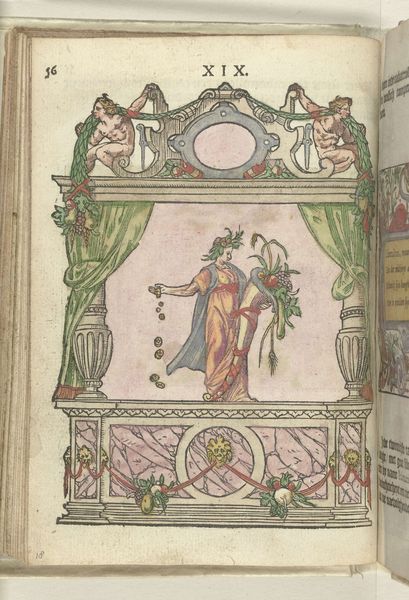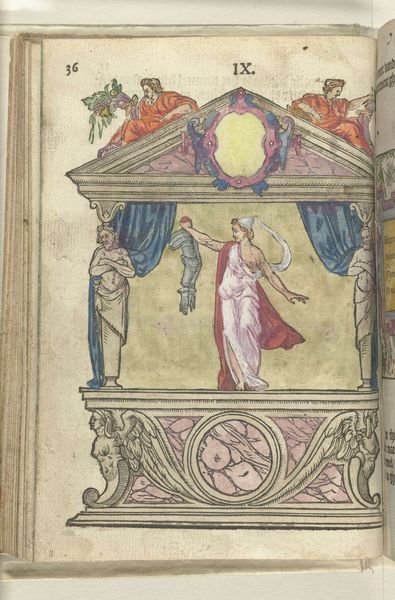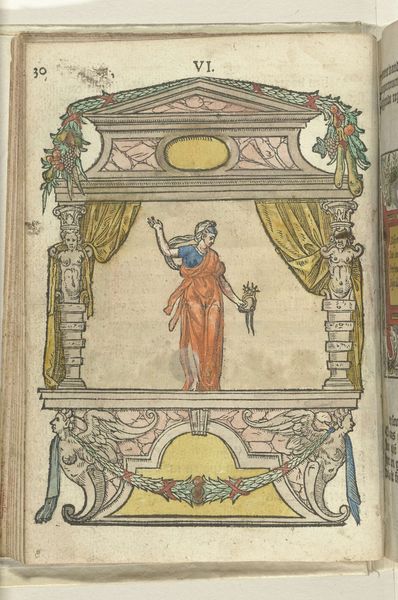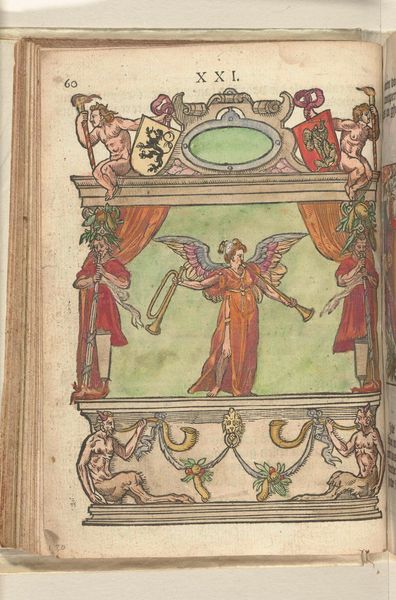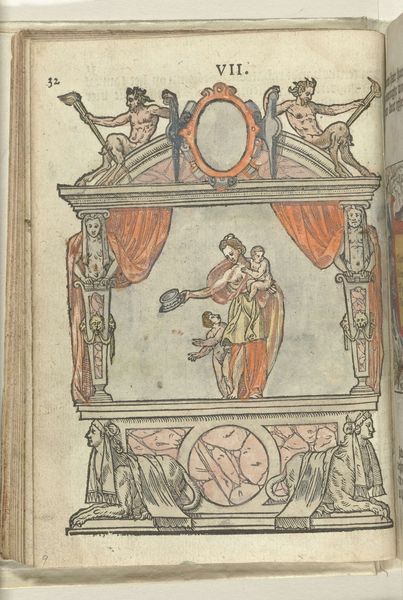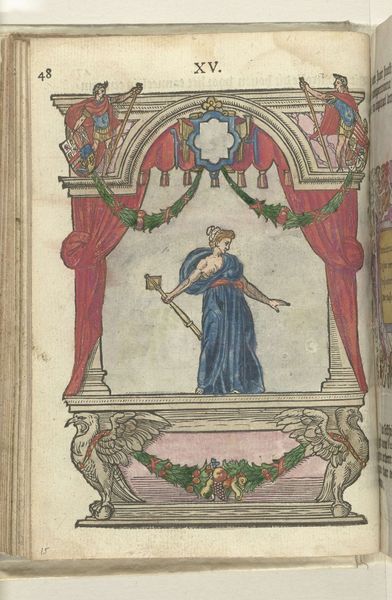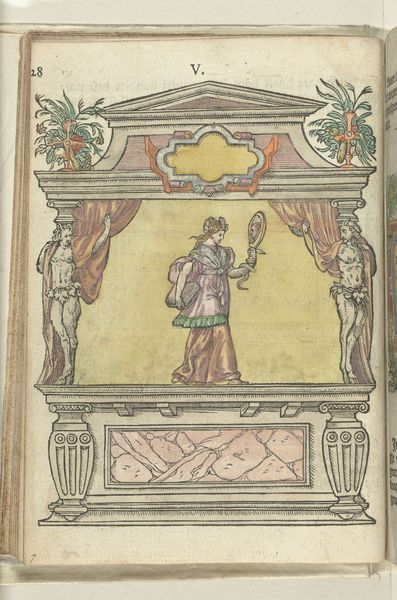
Toneel met personificatie van de Voorzichtigheid (Prudentia), 1578 1578 - 1579
0:00
0:00
drawing, coloured-pencil, paper, ink
#
drawing
#
coloured-pencil
#
allegory
#
figuration
#
paper
#
11_renaissance
#
ink
#
coloured pencil
#
history-painting
#
academic-art
Dimensions: height 155 mm, width 115 mm
Copyright: Rijks Museum: Open Domain
Editor: Here we have "Toneel met personificatie van de Voorzichtigheid (Prudentia)", created around 1578 by Antoni van Leest. It's an ink, colored pencil, and drawing on paper. It's part of what seems to be a bound book. What really strikes me is the elaborate stage-like construction. How would you interpret this piece? Curator: Well, considering the materials, we see a distinct process of layered application. The initial ink drawing likely provided the structural framework, and then the coloured pencil was meticulously applied to define form and texture. Given that it is bound in a book and the printing technology of the era, what implications does this have for the wider distribution and reception of these allegorical figures beyond elite circles? Editor: That's a good point about accessibility. It makes you wonder about the social context of producing illustrations. I also noticed what looks like hasty coloring -- there are spots outside the lines. Was this hurried work, or is that simply what illustrations often look like back then? Curator: It speaks volumes about workshop practices, doesn’t it? This might imply division of labor, with perhaps less experienced hands filling in colors. The focus might have been less on immaculate perfection, and more on volume and efficient production, especially if this was destined for a widely distributed publication. Note, too, how the allegorical content emphasizes virtue. Is it meant for mass consumption, teaching morals to tradespeople and artisans, or for elite distribution amongst scholarly audiences? Editor: That's fascinating! Considering the social status of this book illustration is relevant to thinking through what it really means. Thanks so much! Curator: Absolutely. Examining the tangible production gives us direct insights into the complex interplay of art, labor, and its intended audience during the late Renaissance.
Comments
No comments
Be the first to comment and join the conversation on the ultimate creative platform.
